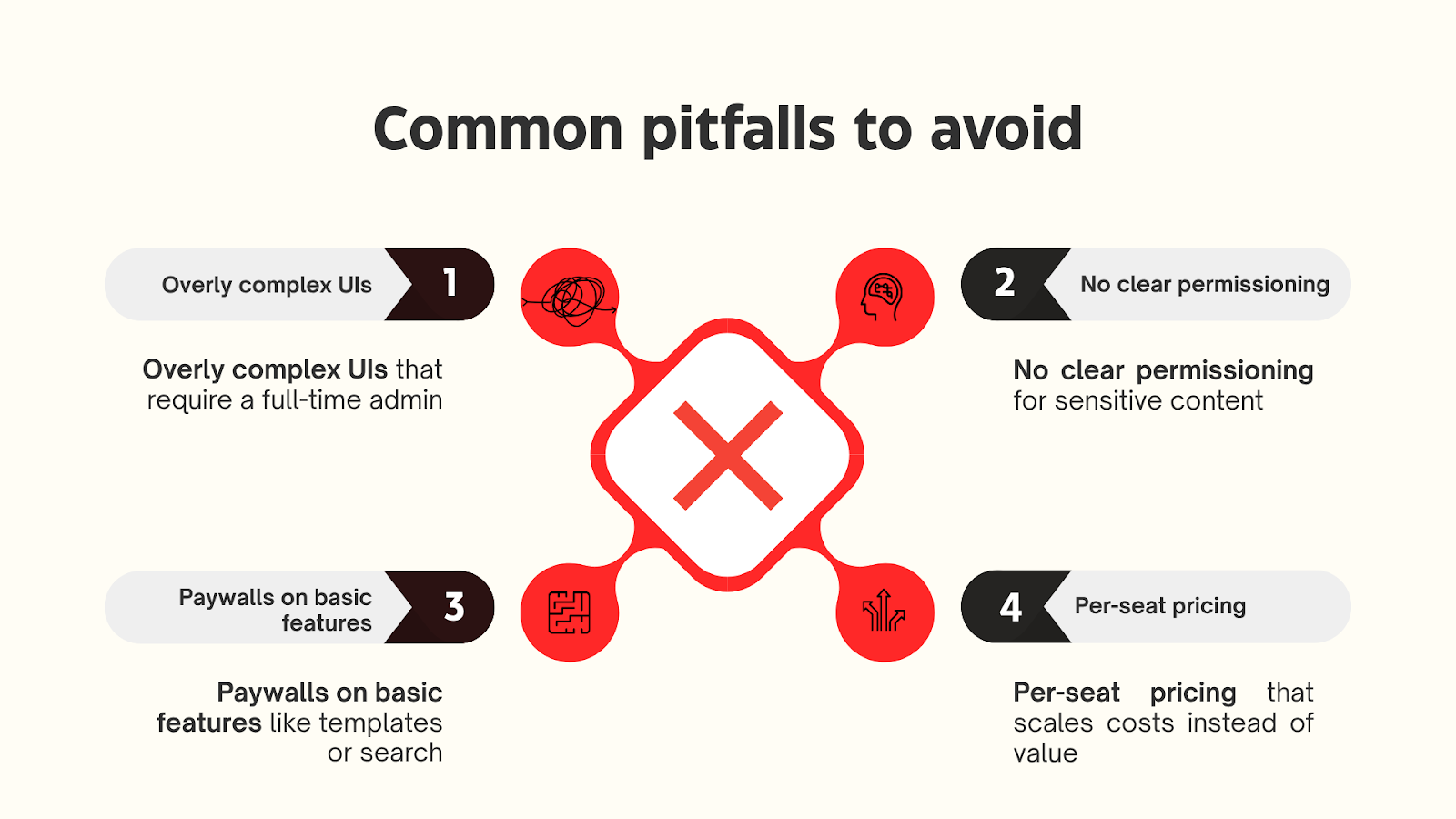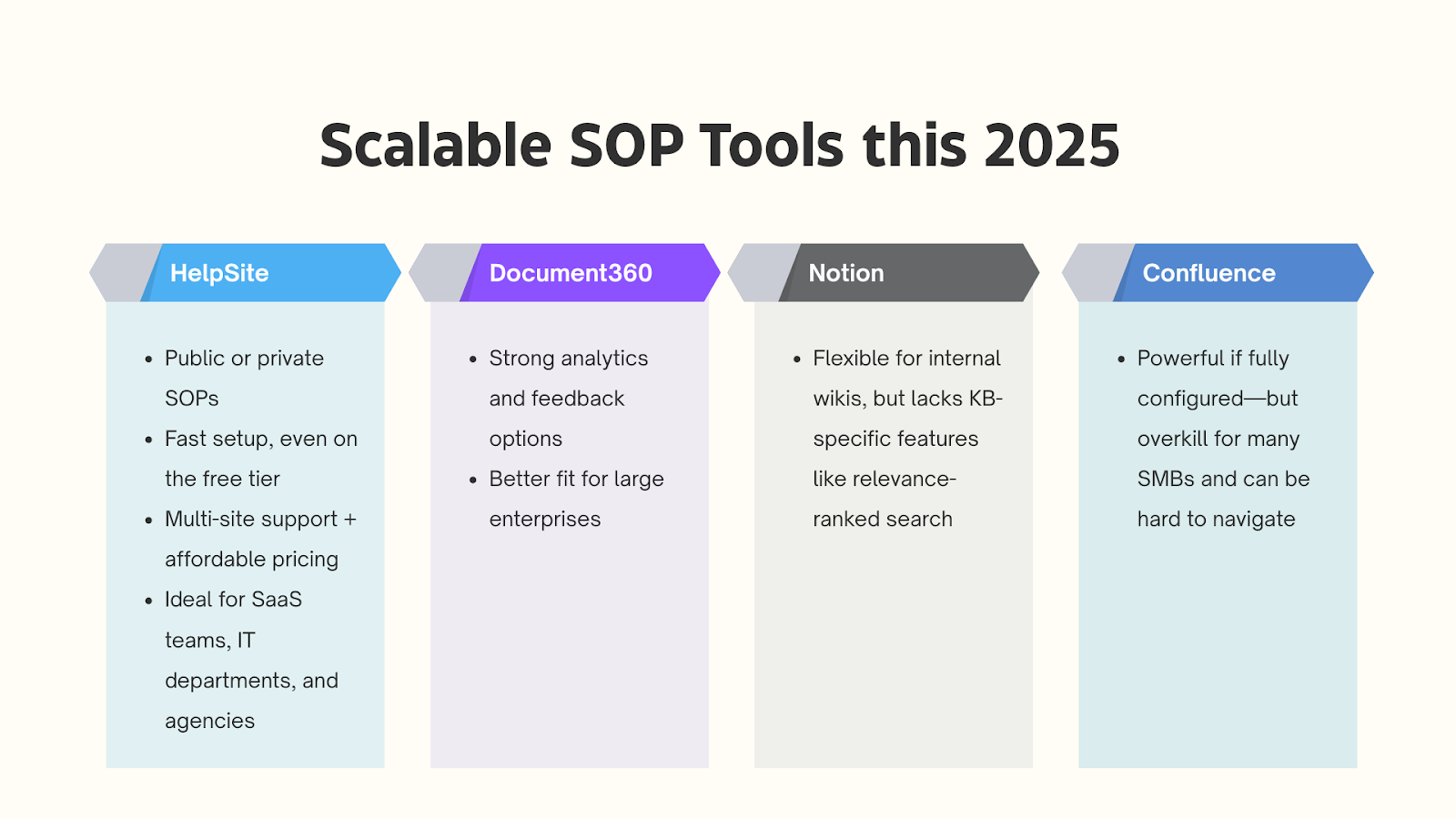Standard operating procedures software: what to look for in 2025
.png)
Standard operating procedures software: what to look for in 2025
You’re drowning in Google Docs. Your team keeps asking the same questions. And onboarding new hires takes longer than it should. If that sounds familiar, it’s time to level up from static documents to real standard operating procedures (SOP) software.
But not all tools are created equal. In 2025, the best SOP platforms aren’t bloated enterprise suites—they’re clean, fast, and built for busy operations teams.
Below, we’ll break down exactly what to look for in SOP software this year, including key features, red flags, and a few tools leading the pack.
Why SOP software matters more than ever
A well-documented process library saves time, reduces errors, and keeps teams aligned—even across time zones or departments.
According to McKinsey, companies that standardize their processes can cut operational waste by up to 30%. But to get that ROI, your SOPs need to be easy to find, follow, and update.
That’s where dedicated SOP management tools shine. Unlike file folders or wikis, they’re purpose-built for:
- Version control and process ownership
- Structured templates to keep documentation consistent
- Search and navigation that helps teams find answers fast
- Access controls for sensitive internal SOPs
Key features to prioritize in 2025
1. Speed and simplicity
SOP tools should help you move fast—not slow you down. Look for platforms that:
- Launch in minutes, not weeks
- Require zero developer support
- Offer intuitive editors anyone on your team can use
2. Internal vs. public knowledge base support
Some teams just need internal process documentation. Others want a customer-facing help center, too.
The best SOP software supports both. HelpSite, for example, lets you toggle between private SOP wikis and public help sites—with granular access controls and SSO options.
Helpful Guide: HelpSite's "Public or Private" toggle in site settings.
3. Search that actually works
If users can’t find your SOPs, they won’t use them. Prioritize platforms with:
- Relevance-ranked, real-time search
- Semantic keyword matching
- Mobile-friendly results
4. Multi-site management (if you’re scaling)
Agencies, franchises, or multi-brand companies often need separate SOP hubs per client, brand, or region.
HelpSite stands out by including multi-site support on all paid plans—unlike some tools that charge enterprise rates just to add a second KB.
5. Clean UX and no-code customization
Your SOP software should reflect your brand, not clash with it. Look for:
- Custom domains and branding options
- Responsive design that works on any device
- The ability to add CSS/JS for teams who want more control
Common pitfalls to avoid
Not all SOP tools are built with operational teams in mind. Here are a few red flags:

Top contenders for SOP software (2025 edition)
We won’t knock the big players, but if you’re looking for a simple, scalable SOP tool this year, start here:

What’s next? Build your SOP hub this week
The right standard operating procedures software can save hours of busywork, prevent critical mistakes, and help your team scale with confidence.
Start small: document your top five recurring workflows. Choose a tool that makes publishing painless. And remember—clarity beats complexity.



.jpg)